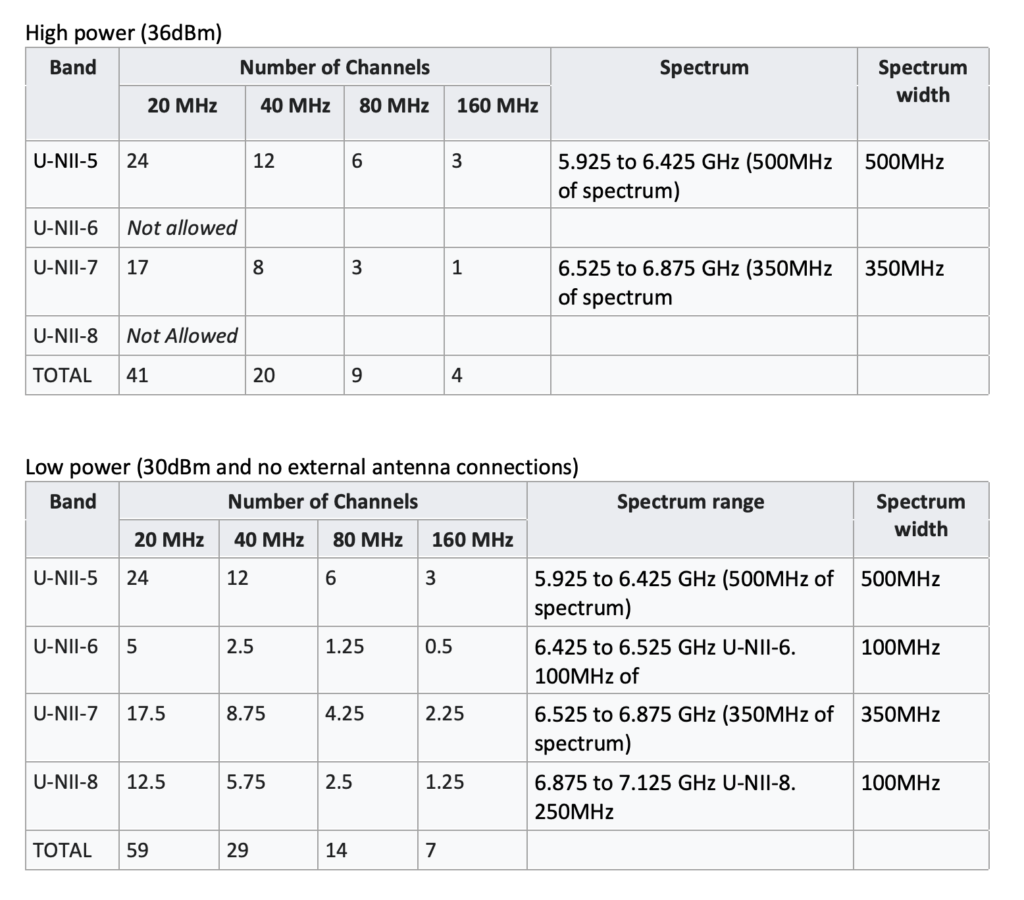The New 6GHz WiFi Spectrum
Recently one of our suppliers, Aruba, released a new product. They did so while many in the industry are struggling with supply and logistics constraints. I found it interesting that we can now get our hands on the new next-gen equipment rather than the older mainstream gear.
The equipment from Aruba that got my attention is the new AP635. While the AP535 is something we use a lot, the new AP635 uses the new 6GHz spectrum.
I have been keeping my eye on these developments for a few years. The 6GHz spectrum allocation for WiFi has been rolled out in the US and the Australian spectrum regulator (ACMA) is looking to open up this part of the spectrum also.
The new wifi standard that uses this new spectrum is or will be called WiFi6E. The allocation in the US and hopefully in Australia opens up 1.2GHz of spectrum for WiFi use. The added spectrum simply adds more channels and the WAPs use the spectrum in the same way (802.11AX) so the new technology will work with old.
The new spectrums use is a little more complex than the existing but relatively straight forward. The US FCC has led the way in the allocation of this spectrum and so it is interesting to see how they proposed to manage it as it might end up being what we also can use.
 The 6GHz WiFi spectrum is broken into 4 new ISM categories or bands (U-NII) and the use of these varies depends on internal or external use and they have power level maximums that need to be adhered to. The channels are broken up into multiple 20MHz channels consistent with existing 5GHz channel
The 6GHz WiFi spectrum is broken into 4 new ISM categories or bands (U-NII) and the use of these varies depends on internal or external use and they have power level maximums that need to be adhered to. The channels are broken up into multiple 20MHz channels consistent with existing 5GHz channel
In the US operators can choose ISM band U-NII-5 and U-NII-7 for indoor and outdoor use with power levels up to 36dBm EIRP (which is a massive 4W of power). Indoors operators can use ISM bands 5 through 8 but at lower power levels of 30dBm EIRP (which is still a big number) and the WAPs that can operate in this way cannot have external connectors (ie they want to limit the EIRP). So obviously WAPs using external antennas will be limited to UNI bad 5 and 7.
For context, in Australia our current 5GHz spectrum provides us 21x20MHz, 9x40MHz, 4x80MHz and 2x160MHz channels.
In Australia ACMA has proposed in December 2021 to open 5.925 to 6.425 GHz of the spectrum (like the U-NII-5 in the US) for use by WiFi with a power limit of 250mW EIRP indoors (24dBm) and 25 mW (14dBm) outdoors. So this will give us 24 extra 20MHz channels. They also started consultation about using the equivalent of U-NII-7 so we might get another 17 or so.
Having a lot more channels will allow us to build fast high density networks and it could permit low cost mesh networking. With so many channels we will have less interference caused by over use of limited channels. I see benefits here with large high rise buildings and the like. I am keen to see Australia follow the lead of the FCC so we can start to use this technology here. There are many clients I would like to set up using this spectrum!
